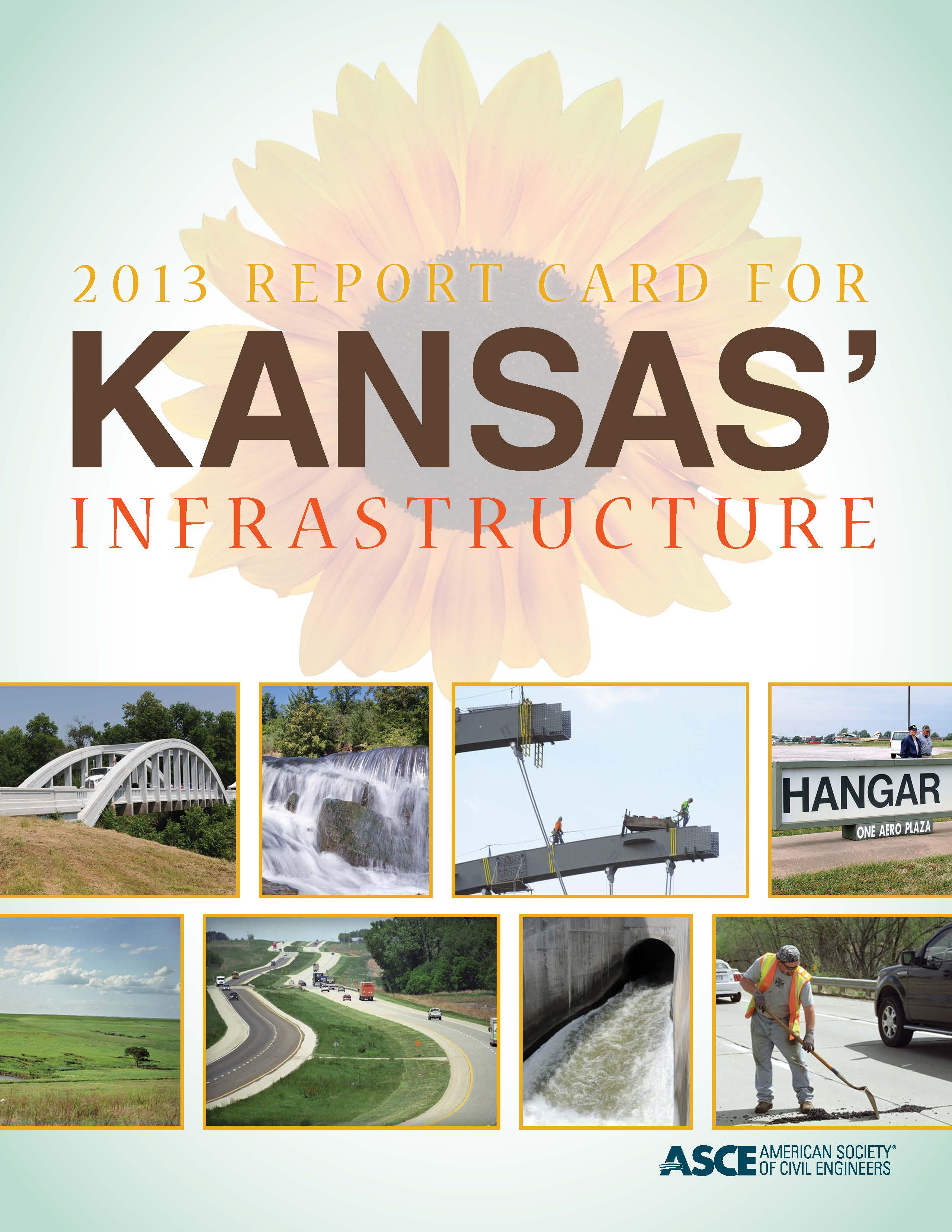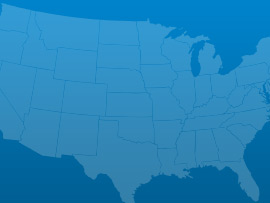 2013 Report Card for Kansas' Infrastructure
2013 Report Card for Kansas' InfrastructureInfrastructure is the backbone of the state’s economic and social activity. On any given day we engage in the use of infrastructure in all of our daily activities. From the water we drink, to the roads we drive on, to the energy that heats and cools our homes and powers our computers, to the schools in which our children are educated; we are completely dependent on the infrastructure that provides these necessities.
Although they often go unnoticed, elements such as reliable power, efficient transportation, and safe schools provide quality of life and drive our economic engines as they attract business and allow it to prosper. The central location of the state of Kansas gives our infrastructure a unique importance as the crossroads of several interstate highways and rail systems intersect in our state. With this in mind, engineers from the Kansas City and Kansas Sections of the American Society of Civil Engineers (ASCE) came together to grade the infrastructure for the entire state of Kansas and raise awareness of the need for continued funding and maintenance of these essential facilities.
Read the full Report Card here.
 Aviation
Aviation Bridges
Bridges Dams
Dams Drinking Water
Drinking Water Energy
Energy Levees
Levees Rail
Rail Roads
RoadsA: Exceptional, B: Good, C: Mediocre, D: Poor, F: Failing, ?: Incomplete
Each category was evaluated on the basis of capacity, condition, funding, future need, operation and maintenance, public safety, resilience, and innovation
Aviation
79 public-use airports
Bridges
2,554 of the 25,171 bridges are structurally deficient
Bridges
$43.10 million in bridge funds came from the Federal Highway Bridge Fund in 2011
Dams
227 high hazard dams
Dams
85% of the state regulated dams have an Emergency Action Plan
Drinking Water
$4.2 billion in drinking water infrastructure needs over the next 20 years
Energy
3.473 gigawatt-hours of renewable energy every year, ranking it 33th
Hazardous Waste
11 sites on the National Priorities List
Inland Waterways
120 miles of inland waterways, ranking it 39th nationally
Levees
772 miles of levees
Ports
300 thousand short tons of cargo in 2012, ranking it 42nd nationally
Public Parks
$2.7 billion of unmet needs for its parks system
Rail
14 freight railroads covering 4,891 miles across the state, ranking 6th nationally by mileage
Roads
$878 million a year in costs to motorists from driving on roads in need of repair, which is $435 /yr per motorist
Roads
10,547 of the state’s 140,614 public roads are major roads, and 8% are in poor condition
Schools
$4.6 billion in estimated school infrastructure funding needs
Transit
7.7 million annual unlinked passenger trips via transit systems including bus, transit, and commuter trains
Wastewater
$3.2 billion in wastewater infrastructure needs over the next 20 years

March 03, 2017
As the President’s repeated in his address to Congress his pledge to dramatically increase infrastructure spending to the tune of $1 trillion, various Congressional Committees

March 01, 2017
On Tuesday night, President Trump addressed a joint-session of Congress for the first time in his presidency. Infrastructure was among the many issues he discussed.

February 28, 2017
U.S. motorists set a new record for vehicle miles travelled (VMT) in 2016, driving over 3.2 trillion miles, an increase of 70 billion miles from

February 17, 2017
Romantic dates, the Grammy awards and celebrating black history are not the only milestones of this week; the Oroville dam crisis in California and the